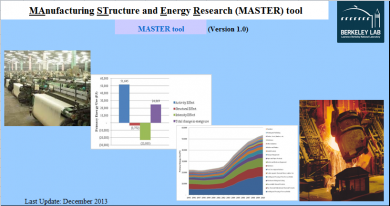New Berkeley Lab-Designed Tool: MAnufacturing STructure and Energy Research Tool (MASTER)

The China Energy Group of Lawrence Berkeley National Laboratory has released the MAnufacturing STructure and Energy Research (MASTER) tool. The MASTER tool is designed to help users understand how different factors (production growth of industry subsectors, industry structural change, and energy intensity change of industry subsectors) influence overall industrial energy use trends over time. Policy makers often seek such values in order to make more informed decisions related to energy and industrial policies. This tool helps to quantitatively compare the effect of structural change (i.e. the change in share of value added of manufacturing subsectors) in the past and in the future, so that if needed, policy makers can adjust their policies to help realize China’s or other countries’ goals to move toward less energy-intensive, higher value added industries. Different scenarios can be developed using this tool to show the structural change achieved through different paths and to understand the consequences of supporting or limiting the growth of certain manufacturing subsectors from the point of view of energy use and structural change.
Based on the energy use and value added data input by the user, the MASTER tool conducts the decomposition analysis for different time periods in the past or in the future chosen by the user. The decomposition analysis results can be viewed by industrial subsector. The tool also presents energy use, value added, and energy intensity trends in graphical form.
The MASTER tool can be used by the local and national government as well as academia and other organizations to analyze the past and future energy trends of industry in a given region or country. It can help to quantify industrial structural change during the study period and how it affects the industrial energy use.
The tool is available in both English and Chinese language at the link below.